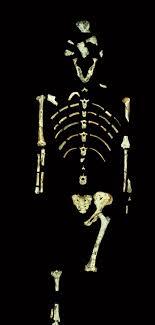An existential question all of us may have wondered at some point or another is “Where did humans come from,” and scientists may be closer to answering this with the discovery of Lucy. Lucy is the fossil skeletal remnants of a female Australopithecus afarensis, a distant relative of humans. Lucy’s discovery is pivotal to building our understanding of human evolution and this is why scientists and researchers are still so fascinated with her even though it has been 50 years since her discovery.
The fossil that was a landmark discovery of the 20th century was found by American paleontologist Donald Johanson and his research assistant Tom Gray. At the time, Johanson had been a paleontologist at the Cleveland Museum of Natural History. He had embarked on an expedition organized by French geologist Maurice Taieb to Hadar, Ethiopia. On November 24, 1974, Johanson and Gray were walking back to their Land Rover after a lackluster morning. On the journey back, Johanson had seen what would then become Lucy’s arm. Following this, the pair found other parts: a skull piece, a thighbone, part of a pelvis, and vertebrae. All these components pieced together a rare partial skeleton. That night, the team celebrated this finding with the rest of their camp by drinking beer and dancing while blasting the Beatles song “Lucy in the Sky with Diamonds.” It is through this song that the skeletal remains got the name Lucy.
Lucy is 3.18 million years old. his is extraordinary as it gives researchers a glimpse into the state of hominins at the time. Geneticists believe that a species between humans and chimpanzees existed after the split occurred between the two groups, and Lucy is likely a very ancient ancestor of modern humans. For the first 20 years after Lucy’s discovery, it was established that her species was the oldest known member of the human family. Fred Spoor, paleontologist at the Natural History Museum of London, stated, “Once upon a time, life was relatively simple because anything before 3 million years was A. afarensis […] (and) it was the mother of us all. That was the gospel.” However, other species were found to be even older than Lucy, complicating the human family line. Tim White, a paleoanthropologist at the University of California, Berkeley, shared how it had become a common belief among scientists that because Lucy had the characteristics of modern humans but was so ape-like, her predecessor would have been a chimpanzee. This, however, is certainly not the case.
Another reason why Lucy is a special find is because of the characteristics she shares with modern humans. Specifically, Lucy had the ability to stand upright just like humans. Chimpanzees, unlike humans, cannot stand upright because they cannot straighten their legs to the full extent, which is what leads them to have a hunched-over posture and walk on fours. Lucy, despite having similarities to chimpanzees, could walk straight, which serves as a useful distinction tool for scientists in mapping out the human family line. While this is a huge breakthrough, so many questions, followed by research, remain to paint the full picture of how humans came to be.
